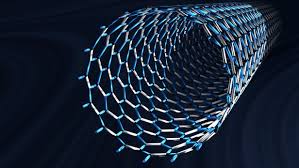
Breaking News
 $26M Frozen on Blockchain - With One Click
$26M Frozen on Blockchain - With One Click
 Italy are on national strike shutdown rejecting digital enslavement...
Italy are on national strike shutdown rejecting digital enslavement...
 The following U.S. states are currently using the rebranded "Reporty Homeland Security" so
The following U.S. states are currently using the rebranded "Reporty Homeland Security" so
 NATO Chief Urges Europe To Prepare For Long-Term World War With Russia, China, Iran & North Korea
NATO Chief Urges Europe To Prepare For Long-Term World War With Russia, China, Iran & North Korea
Top Tech News
 HUGE 32kWh LiFePO4 DIY Battery w/ 628Ah Cells! 90 Minute Build
HUGE 32kWh LiFePO4 DIY Battery w/ 628Ah Cells! 90 Minute Build
 What Has Bitcoin Become 17 Years After Satoshi Nakamoto Published The Whitepaper?
What Has Bitcoin Become 17 Years After Satoshi Nakamoto Published The Whitepaper?
 Japan just injected artificial blood into a human. No blood type needed. No refrigeration.
Japan just injected artificial blood into a human. No blood type needed. No refrigeration.
 The 6 Best LLM Tools To Run Models Locally
The 6 Best LLM Tools To Run Models Locally
 Testing My First Sodium-Ion Solar Battery
Testing My First Sodium-Ion Solar Battery
 A man once paralyzed from the waist down now stands on his own, not with machines or wires,...
A man once paralyzed from the waist down now stands on his own, not with machines or wires,...
 Review: Thumb-sized thermal camera turns your phone into a smart tool
Review: Thumb-sized thermal camera turns your phone into a smart tool
 Army To Bring Nuclear Microreactors To Its Bases By 2028
Army To Bring Nuclear Microreactors To Its Bases By 2028
 Nissan Says It's On Track For Solid-State Batteries That Double EV Range By 2028
Nissan Says It's On Track For Solid-State Batteries That Double EV Range By 2028
Laser-activated nanotube skin shows where the strain is

Whether they're in airplane wings, bridges or other critical structures, cracks can cause catastrophic failure before they're large enough to be noticed by the human eye. A strain-sensing "skin" applied to such objects could help, though, by lighting up when exposed to laser light.
Developed by a team led by Rice University's Bruce Weisman and Satish Nagarajaiah, the skin is actually a barely-visible very thin film. It consists of a bottom layer of carbon nanotubes dispersed within a polymer, and a top transparent protective layer composed of a different type of polymer (carbon nanotubes are basically microscopic rolled-up sheets of graphene, graphene being a one-atom-thick sheet of linked carbon atoms).
As is the case with carbon nanotubes in general, the ones in the skin fluoresce when subjected to laser light. Depending on how much mechanical strain they're under, however, they'll fluoresce at different wavelengths. Therefore, by analyzing the wavelength of the near-infrared light that the nanotubes are emitting, a handheld reader device can ascertain the amount of strain being exerted on any one area of the skin – and thus on the material underlying it.
The skin has been tested on aluminum bars, which were weakened in one spot with a hole or a notch. While those bars initially appeared uniform to the reader, the skin dramatically indicated where the weakened areas were once the bars were placed under tension.

 Carbon based computers that run on iron
Carbon based computers that run on iron

